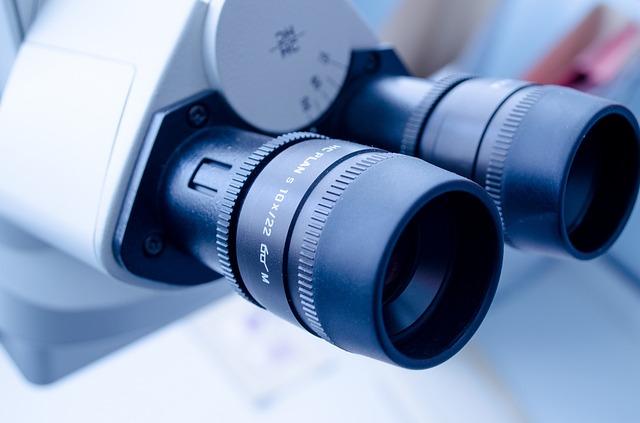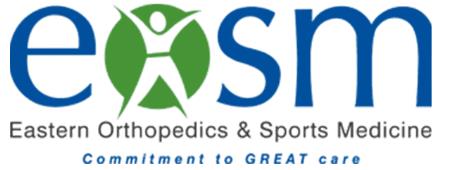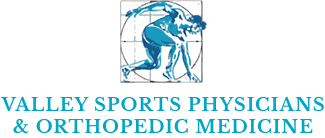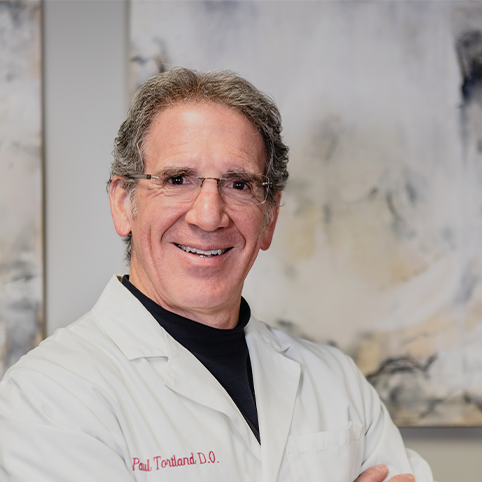Stem Cell Therapy in Connecticut: A Comprehensive Guide for CT Residents
In the picturesque town of Glastonbury, Connecticut, a revolution in regenerative medicine is unfolding. Stem cell therapy, a groundbreaking approach to healing, is gaining traction, providing a beacon of hope for individuals plagued by chronic pain and degenerative conditions.
This comprehensive guide delves into the heart of stem cell treatment, offering a thorough insight for Connecticut residents eager to explore this modern frontier of medicine.
By traversing through the intricacies of stem cell therapies, the well-regarded institutions offering these treatments, and addressing common inquiries, we aim to equip you with a robust understanding.
This article is a bridge connecting you to potential pain solutions, reflecting the essence of regenerative medicine which is akin to nature’s profound ability to renew and restore.
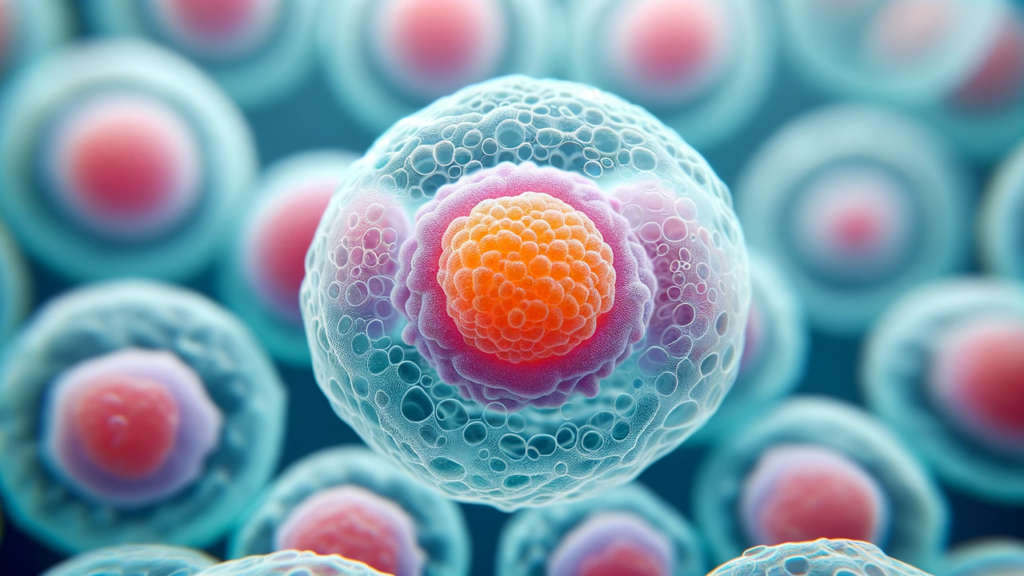
The Essence of Stem Cell Therapy
Stem cell therapy is a marvel in the realm of regenerative medicine, harnessing the body’s natural healing prowess to address a myriad of ailments. At its core, it involves the use of stem cells, the body’s master cells capable of developing into various cell types, to promote the repair and regeneration of damaged tissues.
Stem cells are akin to a blank canvas, ready to be transformed into a myriad of cellular landscapes. They originate from two primary sources: embryonic stem cells and adult stem cells. Embryonic stem cells are pluripotent, meaning they have the ability to morph into any cell type in the human body. On the other hand, adult stem cells, also known as mesenchymal stem cells (MSCs), are multipotent. They can differentiate into a variety of cell types within a particular lineage such as bone, cartilage, muscle, or fat cells.
The process of utilizing these cells begins with a minimally invasive procedure to extract cells either from the bone marrow or adipose (fat) tissue of the patient. Once extracted, these cells are then injected into the target area of the body where repair or regeneration is needed, such as a damaged tendon, ligament, or joint. This injective phase of stem cell therapy is a crucial juncture where the potential of stem cells is directed towards fostering healing and restoration.
Stem cell treatments in Glastonbury offer a glimpse into the boundless possibilities that lie within the realm of regenerative medicine. By leveraging the inherent potential of stem cells, these treatments provide a promising avenue for those seeking relief from chronic musculoskeletal pain, sports injuries, or degenerative conditions like arthritis.
In the subsequent sections, we will delve deeper into the types of stem cell treatments available, the reputable institutions offering these services, and address common queries surrounding stem cell therapy in Connecticut.
Stem Cell Treatments Available in Glastonbury
Glastonbury, Connecticut is emerging as a hub for stem cell treatment and regenerative medicine. Residents and those in surrounding regions have the opportunity to explore a variety of stem cell treatments tailored to address specific ailments. The core of these treatments lies in harnessing the body’s natural healing mechanism to facilitate recovery and alleviate pain.
The types of stem cell therapies available are as varied as the conditions they aim to treat. From orthopedic issues to chronic pain relief, the scope of stem cell applications is broad. One of the common procedures involves injection of mesenchymal stem cells (MSCs) into areas with damaged tissue, such as joints afflicted by osteoarthritis. MSCs are known for their ability to differentiate into various types of cells including bone, cartilage, and tendon cells, making them a potent tool in the arsenal of regenerative treatments.
Moreover, stem cell treatments often go hand in hand with Platelet Rich Plasma (PRP) therapy. PRP involves injecting a concentration of platelets, obtained from the patient’s own blood, into the damaged area to promote healing. When used in tandem with stem cell therapy, PRP can significantly enhance the healing process, creating a synergistic effect that accelerates recovery.
The process of administering stem cell therapy typically begins with a thorough consultation to determine the patient’s eligibility and the potential benefits they could derive from the treatment. Following this, stem cells are harvested, usually from the patient’s bone marrow or adipose tissue, in a minimally invasive procedure. These cells are then prepared and injected into the target area, often using ultrasound guidance to ensure precise delivery.
The beauty of stem cell treatments lies in their ability to offer pain relief and promote healing without the need for surgery or prolonged recovery periods. They herald a new era of musculoskeletal treatment, allowing individuals to return to their normal activities with reduced pain and improved functionality.
In Glastonbury, institutions like the New England Stem Cell Institute and the Yale Stem Cell Center are at the forefront of offering these cutting-edge treatments. With skilled professionals and state-of-the-art facilities, they ensure that patients receive the highest quality care throughout their stem cell therapy journey.
In the following sections, we will dive into the specifics of some of the leading institutions in Connecticut offering stem cell treatments, and explore how they are contributing to the advancement of regenerative medicine.
The Yale Stem Cell Center: A Pioneer in Regenerative Medicine
Connecticut is home to some of the finest institutions pioneering in regenerative medicine and stem cell research, among which the Yale Stem Cell Center stands out prominently. This center is a hub of innovation and research, continually pushing the boundaries of what’s possible with stem cell therapies.
The Yale Stem Cell Center is not only a beacon of hope for those seeking stem cell treatment but also a powerhouse of stem cell research. It thrives on a multidisciplinary approach, bringing together experts from various fields to unlock the full potential of stem cells. The center’s research endeavors span a vast spectrum, from exploring the basic biology of stem cells to developing novel therapies for a myriad of diseases.
Among the services offered, the center provides consultations and treatments for individuals seeking relief from musculoskeletal conditions, employing stem cell therapies to promote healing and alleviate pain. Moreover, it plays a vital role in enhancing the understanding of stem cell biology and the development of new treatment methodologies which are grounded in rigorous scientific research.
Beyond providing treatments, the Yale Stem Cell Center is deeply committed to advancing the field of regenerative medicine through ongoing research. Their investigations delve into the core of stem cell biology, exploring how stem cells can be harnessed to repair damaged tissue, combat degenerative diseases, and improve the human condition. The center’s work is instrumental in driving forward the scientific understanding and the practical application of stem cell therapies.
The realm of stem cell-based treatments is one of the most exciting and rapidly evolving fields in medicine today. Establishments like the Yale Stem Cell Center are not merely treatment providers; they are torchbearers illuminating the path towards a new era of medical science. Through a blend of clinical practice and pioneering research, they are helping to shape a future where the body’s natural healing capacities are leveraged to their fullest potential.
In the next section, we will venture further into the realm of stem cell therapy in Connecticut by exploring another remarkable institution, the New England Stem Cell Institute, which is leading the charge in providing stem cell treatments to those in need.
New England Stem Cell Institute: Leading the Charge
In the heart of Connecticut, the New England Stem Cell Institute emerges as a vanguard in the sphere of stem cell therapies and regenerative medicine. This institute is synonymous with innovation and excellence, making it a significant destination for individuals keen on exploring stem cell treatments for a range of musculoskeletal and orthopedic conditions.
What sets the New England Stem Cell Institute apart is its amalgam of seasoned professionals, cutting-edge technology, and a patient-centered approach. The institute prides itself on being a national leader in stem cell treatment, providing bespoke therapies tailored to meet the unique needs of each patient. Here, the focus is not merely on treating symptoms but addressing the root cause of ailments, paving the way for sustainable pain relief and improved quality of life.
A myriad of conditions find remedy under the expertise of the institute’s professionals. Whether it’s chronic musculoskeletal pain, sports injuries, or degenerative conditions like osteoarthritis, the application of stem cell therapies holds promise. The procedures are minimally invasive, often involving the injection of stem cells or platelet-rich plasma (PRP) into the affected area to foster the body’s natural healing process.
Moreover, the New England Stem Cell Institute is an epicenter of knowledge and education. It’s not just about administering treatments; it’s about empowering individuals with the knowledge and understanding of how regenerative medicine can serve as a conduit for healing. They believe in an informed patient who is well-versed in the benefits and the process of stem cell treatments, making the journey towards healing a collaborative endeavor.
The institute also plays a significant role in advancing the field of regenerative medicine through rigorous research and adherence to the highest standards of medical practice. The professionals here are deeply committed to staying abreast of the latest advancements in stem cell research, ensuring that the treatments offered are grounded in the latest science.
The New England Stem Cell Institute is more than just a medical facility; it’s a sanctuary of hope and healing for those beleaguered by chronic pain and debilitating conditions. As we delve deeper into other facets of stem cell therapy in Connecticut in the ensuing sections, the pivotal role of such esteemed institutions in enhancing patient care and advancing the field of regenerative medicine cannot be overstated.
PRP and Stem Cell: A Synergistic Duo
The alliance of Platelet Rich Plasma (PRP) and stem cell therapy embodies a formidable synergy, catalyzing the healing process in a way that each, individually, wouldn’t achieve. This dual approach is capturing the attention of the medical realm, especially in Glastonbury, Connecticut, where the quest for effective pain solutions is a continuous journey.
PRP is a concentration of platelets derived from a patient’s own blood, rich in growth factors and proteins essential for healing. When injected into the damaged area, PRP accelerates the body’s natural healing processes, reducing inflammation and promoting the regeneration of damaged tissues. On the other hand, stem cell therapies employ the body’s master cells, capable of differentiating into various cell types, to repair and regenerate damaged or degenerated tissues.
The confluence of PRP and stem cell therapy enhances the milieu where healing occurs. PRP provides the necessary growth factors that fuel the stem cells, optimizing their potential to regenerate new tissue. This synergy fast-tracks the healing process, potentially reducing the recovery time for patients.
In the realm of orthopedic and musculoskeletal conditions, this combined approach is demonstrating promising outcomes. For instance, someone with a rotator cuff tear might benefit immensely from this synergistic therapy, as the stem cells could work on regenerating torn tendon tissue, while the PRP could provide the necessary growth factors to nourish this process.
The procedure typically involves a two-pronged approach. First, stem cells are harvested from the patient’s body, usually from bone marrow or adipose tissue. Concurrently, a small volume of blood is drawn from the patient to prepare the PRP. Following this, the PRP and stem cells are jointly injected into the target area, often with the aid of ultrasound to ensure precision. This meticulous approach aims at maximizing the healing potential of both PRP and stem cells.
The fusion of PRP and stem cell treatment is a testament to the evolving landscape of regenerative medicine in Glastonbury, CT. It reflects a broader shift towards harnessing the body’s natural healing capabilities, offering a glimpse into the future of medicine where healing is accelerated, and pain relief is more sustainable.
As we progress in our exploration of stem cell therapy in Connecticut, the following section will unveil the concept of orthobiologics and how they are being utilized in stem cell therapy to redefine the boundaries of orthopedic treatment.
Orthobiologics: The Orthopedic Frontier
Embarking on the orthopedic frontier, the realm of orthobiologics is opening new avenues in the application of stem cell therapies for musculoskeletal conditions. In Glastonbury, Connecticut, the integration of orthobiologics with stem cell therapy is spearheading a novel approach to treating a variety of orthopedic ailments.
Orthobiologics represent a class of medical substances derived from the body’s own tissues and cells, aimed at facilitating the healing of bones, joints, muscles, and tendons. They encompass a range of products including stem cells, platelet-rich plasma (PRP), bone marrow aspirate concentrate (BMAC), and other naturally occurring materials that aid in the repair and regeneration of musculoskeletal tissues.
Stem cell therapy, being a cornerstone of regenerative medicine, synergizes with orthobiologics to foster a conducive environment for healing. For instance, when addressing conditions like osteoarthritis or tendon injuries, a concoction of stem cells and other orthobiologics can be injected into the affected area, initiating a cascade of healing responses. This blend capitalizes on the inherent regenerative capacities of stem cells and the supportive properties of orthobiologics, paving the way for a holistic healing process.
The application of orthobiologics in stem cell therapy holds a promise of reducing inflammation, alleviating pain, and restoring function in a minimally invasive manner. Unlike traditional surgical interventions, this approach significantly reduces the recovery time, enabling individuals to regain mobility and return to their daily routines swiftly.
Moreover, the utilization of orthobiologics is a testimony to the personalized nature of regenerative medicine. The substances used are often derived from the patient’s own body, minimizing the risk of adverse reactions and enhancing the overall safety and effectiveness of the treatment.
In institutions like the New England Stem Cell Institute and the Yale Stem Cell Center, the amalgamation of orthobiologics and stem cell therapies is being explored and refined to offer effective pain solutions to patients. Through meticulous research and clinical practice, these institutions are setting a benchmark in delivering personalized, effective treatments in the orthopedic domain.
As we delve deeper into the financial aspect in the next section, understanding the insurance coverage and financial considerations is crucial for anyone considering stem cell therapy in Connecticut. The journey of healing should be as smooth and informed as possible, allowing individuals to make well-informed decisions.

Insurance Coverage and Stem Cell Therapy
Embarking on the path of stem cell treatment is a decision intertwined with not just medical, but also financial considerations. In Glastonbury, Connecticut, as in many other places, the question of insurance coverage for stem cell therapies often surfaces, shedding light on the financial aspect of this innovative treatment landscape.
Currently, the insurance landscape surrounding stem cell therapy is complex. Many insurance providers categorize stem cell therapies as experimental or investigational, which usually means they are not covered under standard insurance plans. The novelty and the ongoing research in the field of regenerative medicine contribute to this stance, as insurance companies often require a long-standing track record of success and established protocols before offering coverage.
Patients considering stem cell therapies should engage in a thorough discussion with their insurance providers to understand the extent of coverage, if any. It’s advisable to obtain a clear understanding of the costs involved, the possibility of any out-of-pocket expenses, and explore any available financing options.
Moreover, some medical facilities offer financial counseling to help patients navigate the costs associated with stem cell therapy. They might also have payment plans or partnerships with third-party financing companies to ease the financial burden on patients.
While the upfront costs of stem cell therapy can be substantial, it’s essential to weigh these against the long-term benefits and potential savings. For instance, stem cell therapy could potentially obviate the need for more invasive, costly surgical procedures and long-term medication use, thereby offsetting the initial investment over time.
The financial dialogue surrounding stem cell therapy is an evolving one, with hope that as the field advances and gains more mainstream acceptance, insurance coverage might become more favorable.
With financial considerations being an integral part of the decision-making process, it’s imperative for prospective patients to be well-informed and prepared.
Addressing Safety: Is Stem Cell Therapy Safe and Effective?
The allure of stem cell therapy as a novel paradigm in regenerative medicine is often tempered by concerns regarding its safety and effectiveness. In Glastonbury, Connecticut, and across the globe, ensuring the safety and efficacy of stem cell treatments is a paramount concern among medical professionals and patients alike.
When it comes to safety, reputable institutions adhere to stringent protocols to mitigate risks. The procedures involved in harvesting and administering stem cells are typically minimally invasive and conducted under meticulous sterile conditions to prevent infections. Moreover, when stem cells are harvested from the patient’s own body, the risk of adverse reactions such as allergic reactions or rejection is significantly minimized.
Furthermore, precise injection techniques, often guided by advanced imaging technologies like ultrasound, contribute to the safety profile of stem cell therapies by ensuring accurate delivery to the target area. This precision not only enhances safety but also optimizes the potential for effective treatment outcomes.
On the effectiveness front, the burgeoning body of research and clinical data is showcasing promising results in the use of stem cell therapies for a range of musculoskeletal and orthopedic conditions. Patients with chronic pain, joint degeneration, tendon injuries, and various other conditions are reporting improvements in pain levels, mobility, and overall quality of life post-treatment.
The effectiveness of stem cell therapy is often seen in its ability to reduce inflammation, promote the healing of damaged tissue, and potentially delay or avoid the need for surgical interventions. The aim is to restore a level of function and alleviate pain, allowing individuals to engage in daily activities with greater ease.
It’s pivotal to note that the effectiveness of stem cell therapy can vary from individual to individual. Factors such as the extent of injury or degeneration, the specific type of stem cell therapy administered, and the overall health of the patient can influence treatment outcomes.
Engaging with reputable institutions and experienced medical professionals is crucial for ensuring both safety and effectiveness when exploring stem cell therapy options. Patient education and thorough consultations prior to treatment are indispensable steps towards making informed decisions regarding stem cell therapy.
In the ensuing section, we will provide guidance on how to initiate your journey towards potentially life-altering stem cell treatments, including steps on scheduling consultations and what to expect during your initial visit to a stem cell therapy center.
Getting Started: Scheduling Your Consultation
Embarking on the journey towards exploring stem cell therapy entails a step of paramount importance—scheduling a consultation with a reputable regenerative medicine facility. In Glastonbury, Connecticut, establishments like the New England Stem Cell Institute and the Yale Stem Cell Center are at the forefront, providing comprehensive consultations to individuals keen on exploring this innovative medical frontier.
The initial consultation is a crucial phase where you can have an in-depth discussion with a medical professional about your condition, the potential benefits of stem cell therapy, and any concerns you may have. It’s an opportunity to gain a thorough understanding of what stem cell therapy entails and how it might address your specific medical needs.
To schedule a consultation, you can often fill out a contact form on the facility’s website or call them directly. It’s advisable to have your medical records handy, as providing a detailed medical history will aid in the assessment of your candidacy for stem cell treatment.
Upon scheduling your appointment, you should prepare a list of questions and concerns you may have regarding the treatment. Some questions might include:
- What is the process of stem cell treatment from start to finish?
- What type of stem cells will be used, and how are they obtained?
- What are the potential risks and side effects associated with the treatment?
- What are the expected outcomes, and how will success be measured?
- What is the cost of treatment, and what financing options are available?
During your consultation, you will likely undergo a thorough examination, and may also have imaging studies performed to ascertain the extent of your condition. This will also be a time for the medical professional to explain the procedure in detail, discuss any preparation needed, and provide an overview of the recovery process.
This initial interaction is also an opportunity to gauge the level of expertise and the approach of the medical professionals involved. It’s crucial to feel comfortable and well-informed, ensuring that you are making a well-considered decision.
The quest for pain relief and improved quality of life through stem cell therapy begins with a single step, and that step is a well-informed consultation. It sets the foundation for your journey into the realm of regenerative medicine, paving the way towards potentially life-enhancing treatment options.
As we draw this comprehensive guide to a close, the following section will encapsulate the key points to remember as you navigate the path of stem cell therapy.
Key Takeaways: Navigating the Stem Cell Therapy Landscape in Connecticut
As we have traversed the extensive and innovative realm of stem cell therapy in Glastonbury, Connecticut, several key points have emerged. These encapsulate the essence of what stem cell therapy represents, the institutions pioneering this field, and the steps to engage in this transformative treatment modality.
Emergence of Regenerative Medicine: Stem cell therapy is at the helm of regenerative medicine, offering a novel approach to treating a myriad of musculoskeletal and orthopedic conditions. It’s a paradigm shift from traditional treatments, focusing on harnessing the body’s natural healing abilities.
Pioneering Institutions: Reputable institutions like the New England Stem Cell Institute and the Yale Stem Cell Center are pioneering the field of stem cell therapy in Connecticut, ensuring adherence to stringent safety protocols and the delivery of high-quality care.
Safety and Effectiveness: Ensuring the safety and effectiveness of stem cell treatments is paramount. Engaging with reputable institutions, understanding the risks, and having realistic expectations are crucial aspects of venturing into stem cell therapy.
Financial Consideration: Understanding the financial implications, including insurance coverage and out-of-pocket costs, is integral. It’s advisable to have a detailed discussion regarding the financial aspects during your consultation.
Initial Consultation: Scheduling a thorough consultation with a seasoned medical professional in the field of regenerative medicine is the first step in your stem cell therapy journey. This consultation is a platform for understanding the potential benefits, risks, and the process involved in stem cell treatment.
Educated Decision Making: Being well-informed and having a clear understanding of what stem cell therapy entails are crucial for making educated decisions. This includes understanding the procedure, post-treatment expectations, and the long-term benefits stem cell therapy might offer.
Continuous Evolution: The field of stem cell therapy is continuously evolving with ongoing research and clinical trials. Staying updated on the latest advancements is beneficial for anyone considering or already engaged in stem cell treatment.
Navigating the path of stem cell therapy in Connecticut, armed with knowledge and guided by seasoned professionals, opens up a vista of potential for improved health and a better quality of life. It’s a journey worth considering for those yearning for innovative, effective, and sustainable pain solutions.
Connecticut Stem Cell Therapy Providers
Here you can find the best stem cell therapy providers in the state of Connecticut. Fill out the form and a provider will contact you as soon as possible.
